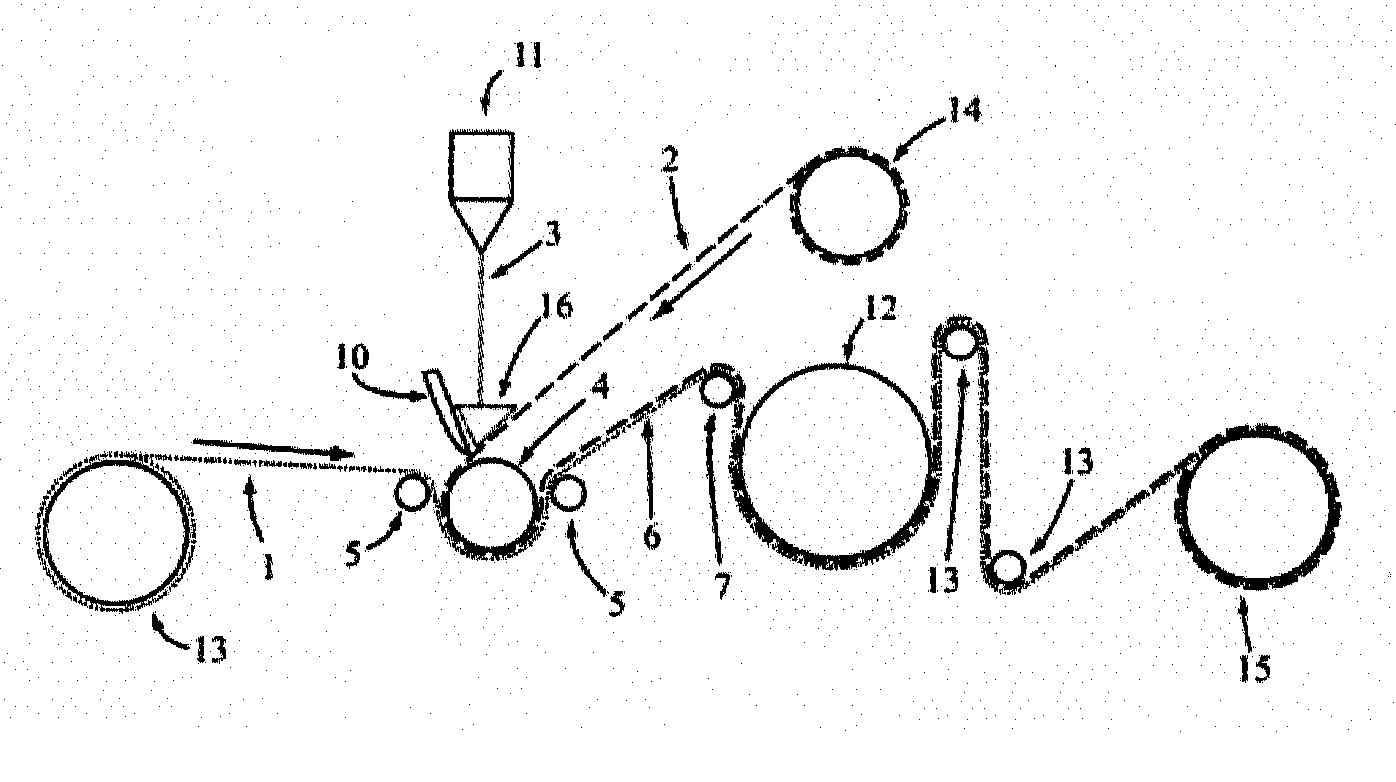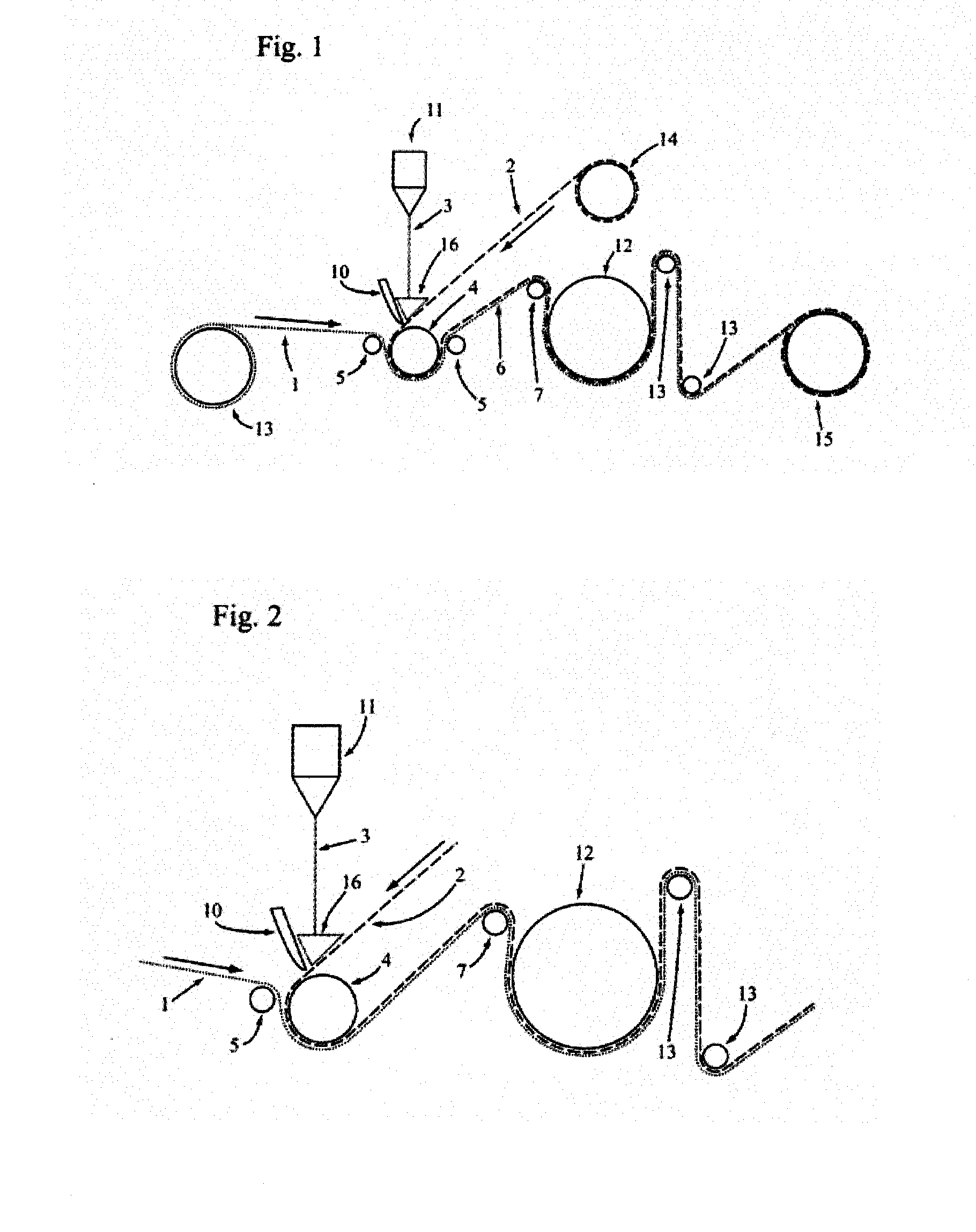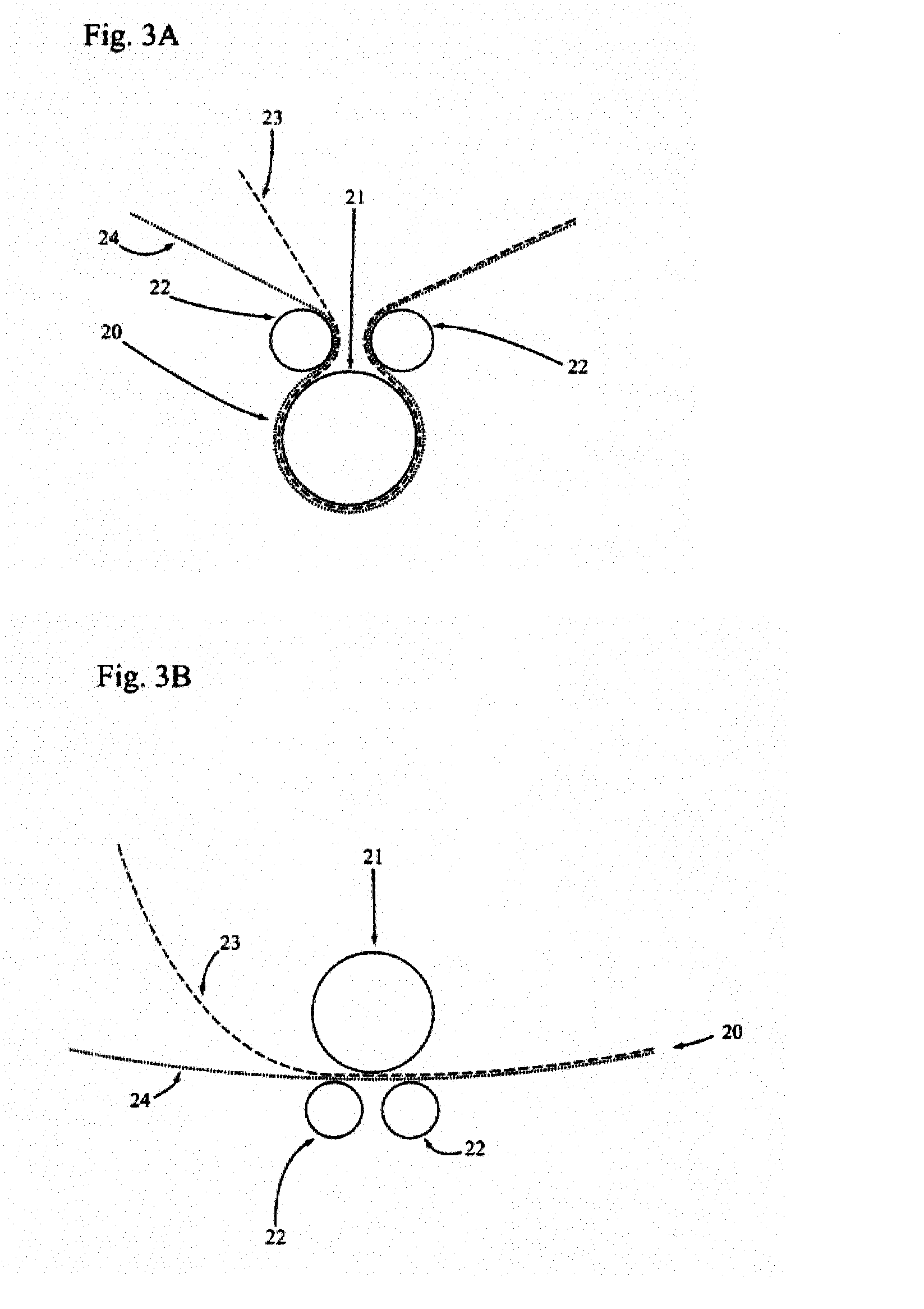Process Of Thermal Transfer Using Hot Melt Adhesive Lamination For Forming A Carpet Backing And Finished Carpet Or Tile Product
a technology of thermal transfer and adhesive lamination, which is applied in the field of finishing systems, can solve the problems of increased manufacturing costs, loss of finished carpet, and insufficient mechanical strength of adhesive to impart dimensional stability, and achieve the effect of minimizing shrinkage and general deterioration of greige carp
- Summary
- Abstract
- Description
- Claims
- Application Information
AI Technical Summary
Benefits of technology
Problems solved by technology
Method used
Image
Examples
example 1
[0067]Beaulieu straight stitched greige carpet type, 24 inches wide was provided. Secondary backing material comprising heat set PET woven fibers with 45 threads per inch count in both the warp and weft directions was also provided (commercially available from Alice Manufacturing). Hot melt adhesive produced from PET modified with a modifying formulation in accordance with U.S. application Ser. No. 10 / 827,028 filed on Apr. 19, 2004, was provided. The hot melt adhesive had a viscosity of 35 centipoise at 325° F. and was mixed at equal parts per weight with a magnetite filler. The heating vessel and heated extrusion die were heated to 325° F. The heated application roll and heated doctor bar were heated to 335° F. The heated doctor bar was set 65 thousandths of an inch from the surface of the secondary backing material. The first unheated nip roll was set at a 250 thousandths of an inch gap from the heated application roll. The second unheated nip roll was set at a 90 thousandths of a...
example 2
[0068]Beaulieu straight stitched greige carpet type, 24 inches wide was provided. Secondary backing material comprising heat set PET woven fibers with 45 threads per inch count in both the warp and weft directions was also provided (commercially available from Alice Manufacturing). The hot melt adhesive described in Example 1 was used. The hot melt adhesive had a viscosity of 30 centipoise at 325° F. and was mixed at equal parts per weight with the same magnetite filler used in Example 1. The heating vessel and heated extrusion die were heated to 335° F. The heated application roll and heated doctor bar were heated to 340° F. The heated doctor bar was set 65 thousandths of an inch from the surface of the secondary backing material. The first unheated nip roll was set at a 250 thousandths of an inch gap from the heated application roll. The second unheated nip roll was set at a 90 thousandths of an inch gap from the heated application roll. The idler tension roll was set at a % inch ...
example 3
[0069]Beaulieu straight stitched greige carpet type, 24 inches wide was provided. Secondary backing material comprising heat set PET woven fibers with 45 threads per inch count in both the warp and weft directions also was provided (commercially available from Alice Manufacturing). The hot melt adhesive described in Example 1 was used. The hot melt adhesive had a viscosity of 25 centipoise at 325° F. and was mixed at equal parts per weight with the same magnetite filler used in Example 1. The heating vessel and heated extrusion die were heated to 325° F. The heated application roll and heated doctor bar were heated to 330° F. The heated doctor bar was set 65 thousandths of an inch from the surface of the secondary backing material. The first unheated nip roll was set at a 250 thousandths of an inch gap from the heated application roll. The second unheated nip roll was set at a 90 thousandths of an inch gap from the heated application roll. The idler tension roll was set at a ¾ inch ...
PUM
| Property | Measurement | Unit |
|---|---|---|
| temperatures | aaaaa | aaaaa |
| weight | aaaaa | aaaaa |
| viscosity | aaaaa | aaaaa |
Abstract
Description
Claims
Application Information
 Login to View More
Login to View More - R&D
- Intellectual Property
- Life Sciences
- Materials
- Tech Scout
- Unparalleled Data Quality
- Higher Quality Content
- 60% Fewer Hallucinations
Browse by: Latest US Patents, China's latest patents, Technical Efficacy Thesaurus, Application Domain, Technology Topic, Popular Technical Reports.
© 2025 PatSnap. All rights reserved.Legal|Privacy policy|Modern Slavery Act Transparency Statement|Sitemap|About US| Contact US: help@patsnap.com



